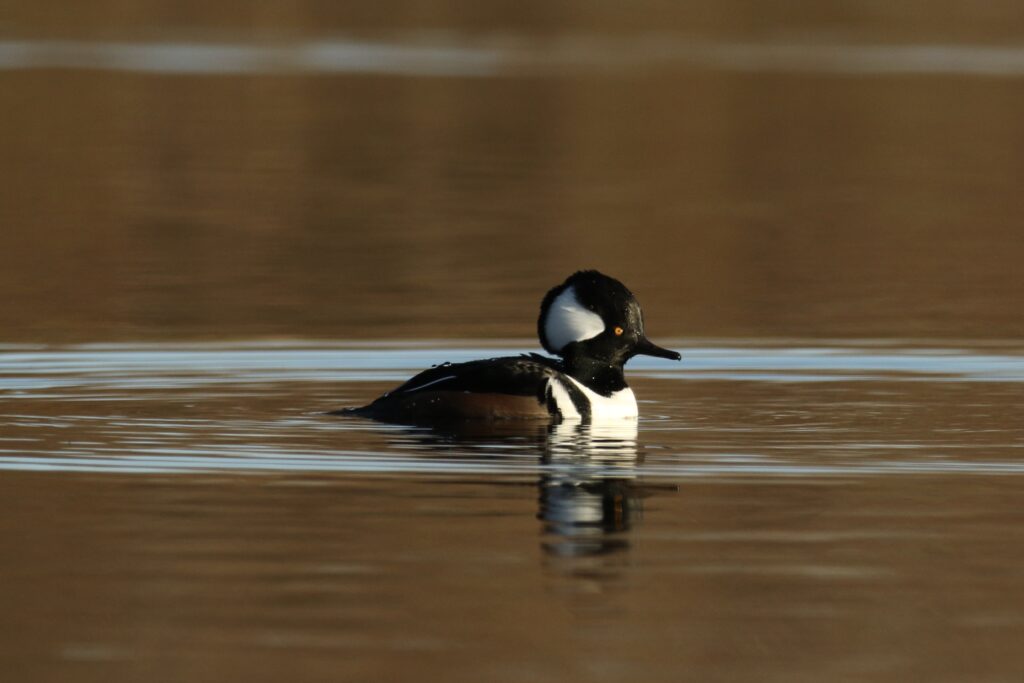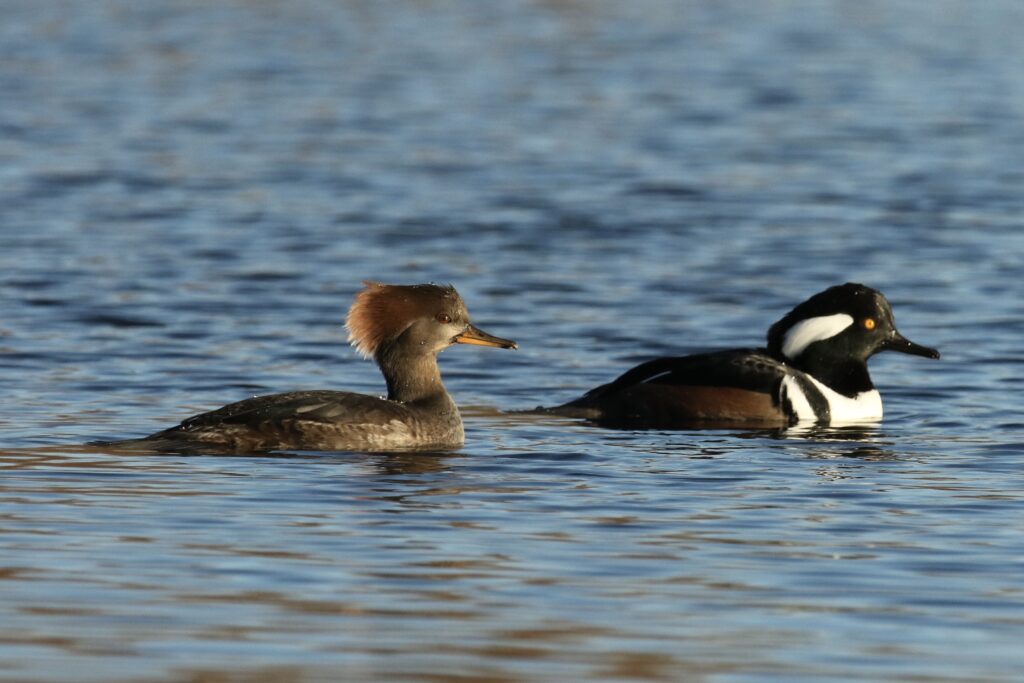Hooded Merganser (Lophodytes cucullatus)

The Hooded Merganser is the smallest of the three merganser species found in BC and all of North America. We also have the larger, common merganser and the red-breasted merganser. A characteristic feature of most mergansers is their collapsable crests on the top of their head. Male hooded mergansers have a distinctive, fan-shaped crest that is bright white with a thin black border. The hooded merganser has a thin, serrated bill. They have a relatively long and rounded tail. Males also have rusty coloured flanks and a black back. Females have a less prominent colouration, with a rusty-orange tinted crest and overall brown to dull-black colouration. The crest of both sexes can be raised or not, making their heads flat or oversized.

Hooded mergansers eat small fish, crustaceans, aquatic insects, mollusks, amphibians, and vegetation. Their diet is much more diverse than other mergansers which eat almost exclusively fish. They catch their food by diving below the surface and locating prey by sight, with eyes that are adapted for seeing underwater. The hooded merganser’s preferred nesting habitat is forested areas close to fresh or brackish water such as densely wooded streams or wetlands, particularly older forests away from human disturbance. This species nests in cavities of live or dead trees along wooded shorelines.

Hooded mergansers are the only merganser species restricted to North America. They breed throughout the Pacific Northwest and forested areas in eastern North America. Hooded mergansers commonly winter in their breeding range; however, some western populations will migrate south to Mexico or eastern populations to the Gulf Coast for the winter. Breeding is widespread in the southern two-thirds of BC. However, breeding has also been observed in Alaska, indicating that this species might breed farther north in BC as well. Hooded mergansers have been found to breed on northern Vancouver Island.
For more information, visit the BC Breeding Bird Atlas and All About Birds by the Cornell Lab.


